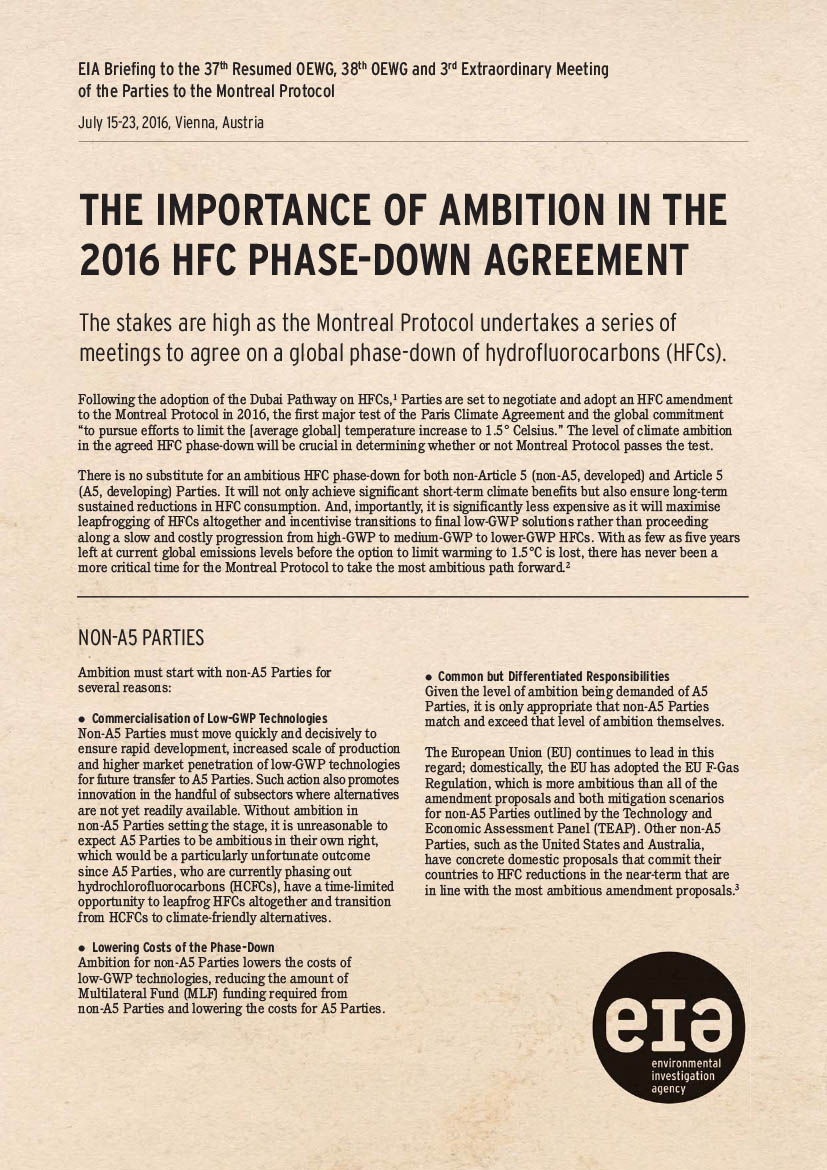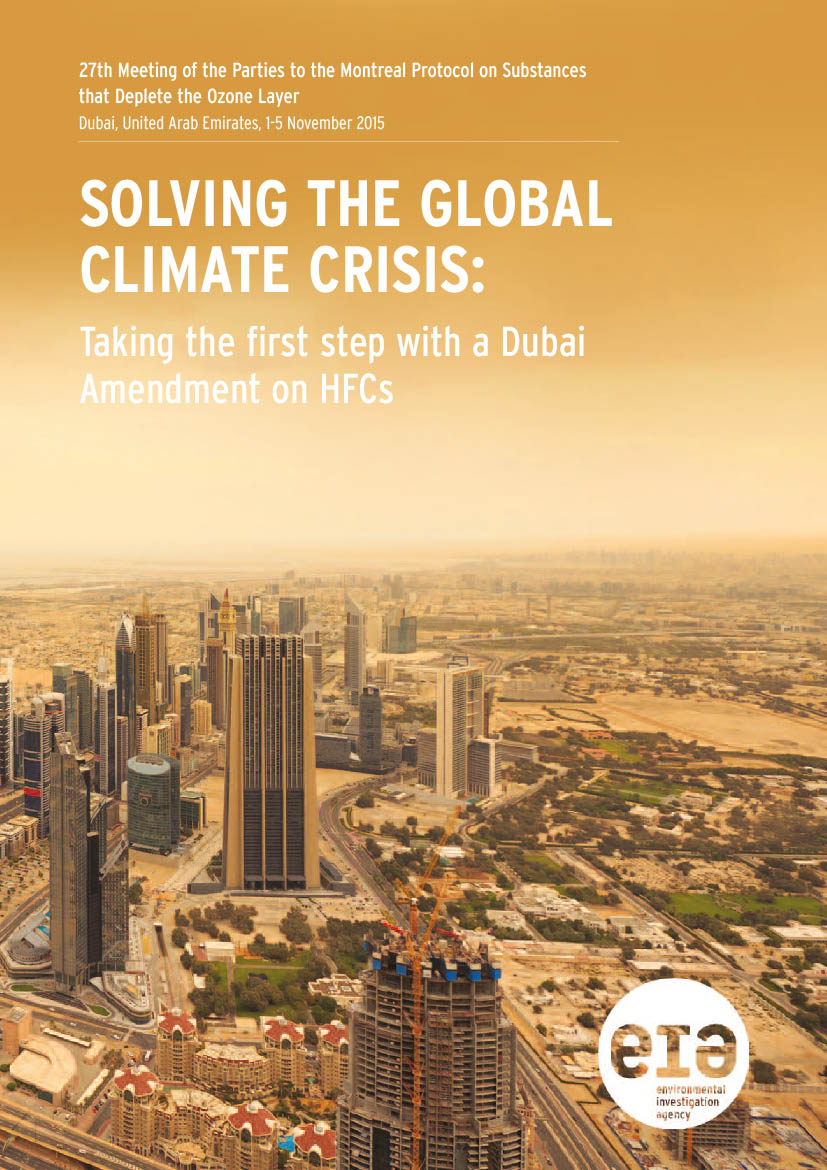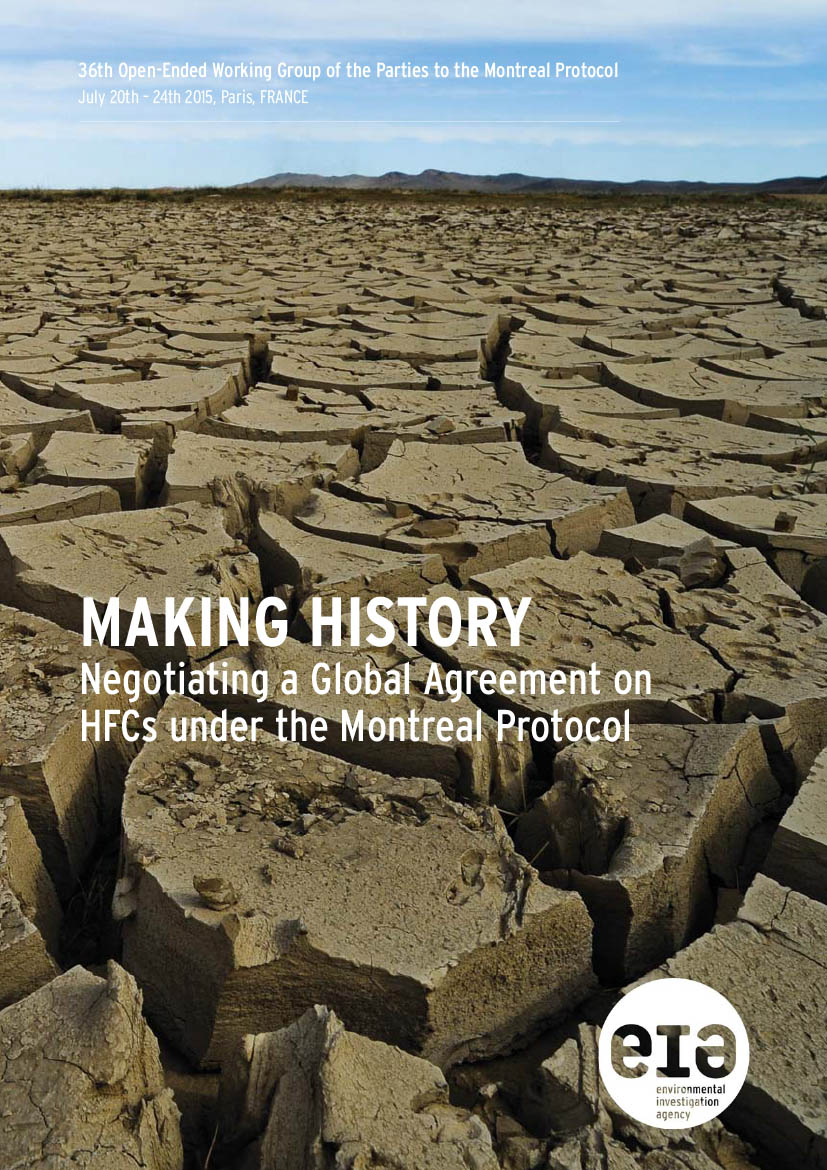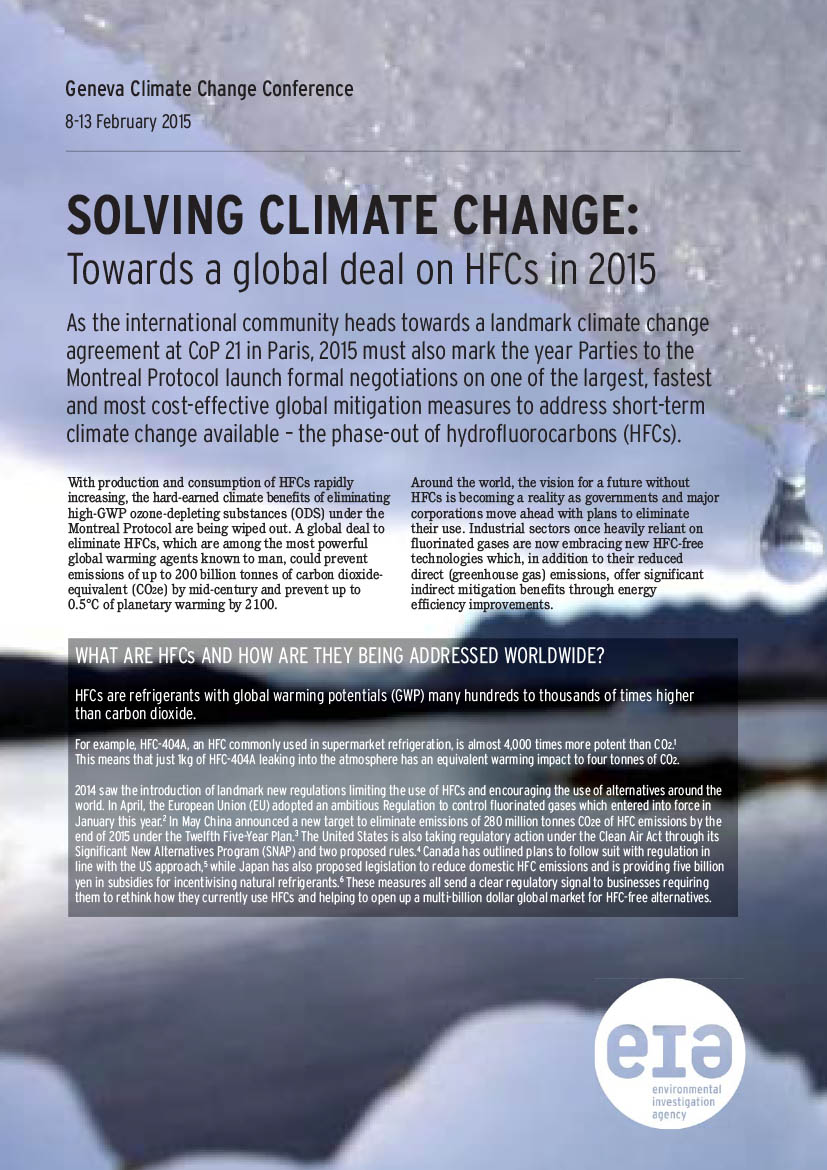
The Importance of Ambition in the 2016 HFC Phase-Down Agreement
An EIA briefing for the Montreal Protocol meetings in Vienna from July 15-23, 2016. Following the adoption of the Dubai Pathway on hydrofluorocarbons (HFCs), Parties to the Montreal Protocol are set to negotiate and adopt an HFC amendment, the first major test of the Paris Climate Agreement
- Areas of work:
- Campaigns:







